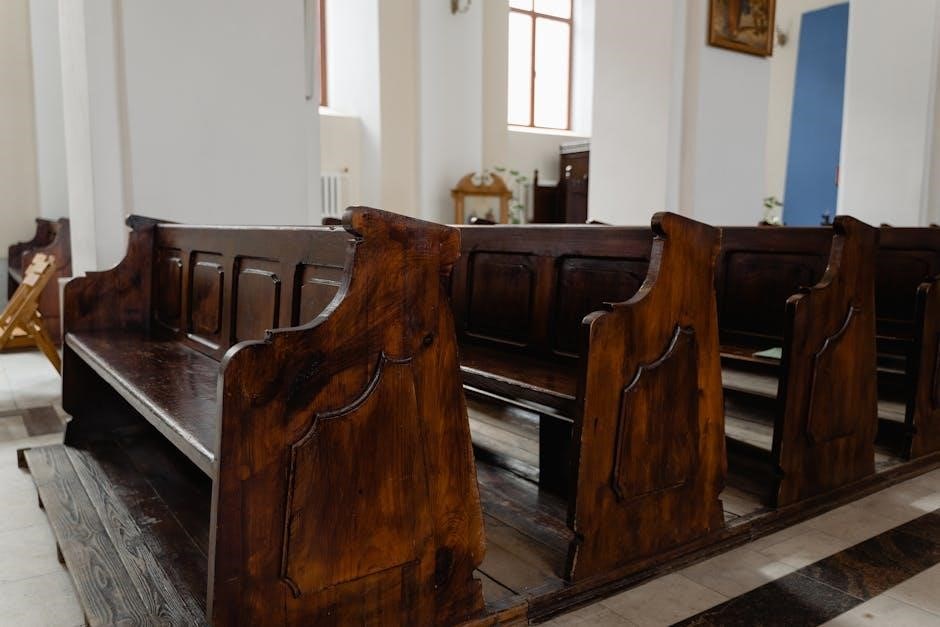According to the Bible, Jesus shed his blood in seven places, a significant event in Christian history, described in various books and articles online today always.
Overview of the Significance of Jesus’ Blood Shedding
The shedding of Jesus’ blood is a pivotal event in Christian theology, symbolizing redemption and salvation. According to various sources, Jesus’ blood shedding is significant because it represents the ultimate sacrifice for humanity’s sins. The Bible describes the blood of Jesus as a means of cleansing and purifying humanity from sin. This event is also seen as a demonstration of God’s love and mercy towards humanity. Many Christian denominations believe that the blood of Jesus has the power to break curses and bring healing and restoration to those who believe in him. The significance of Jesus’ blood shedding is also reflected in the hymns and worship songs that are sung in churches around the world. Overall, the shedding of Jesus’ blood is a powerful symbol of God’s love and redemption, and its significance continues to be celebrated and revered by Christians today through various devotionals and sermons.

The Seven Places Jesus Shed His Blood
Jesus shed blood in seven significant places according to Christian teachings and history always online today somehow.
The Sweating of Blood in the Garden of Gethsemane
The sweating of blood in the Garden of Gethsemane is a significant event in Christian history, described in various books and articles online today. According to the Bible, Jesus went to the Garden of Gethsemane to pray before his crucifixion, and it was there that he sweated blood due to his intense emotional and spiritual distress. This event is often seen as a demonstration of Jesus’ humanity and his willingness to suffer for the sake of others. The sweating of blood is also seen as a symbol of the intense spiritual battle that Jesus faced in the garden, as he prayed to God to take away the cup of suffering that he was about to endure. Many Christians believe that this event is an important part of the story of Jesus’ passion and death, and it is often commemorated in prayers and meditations during the Lenten season. The sweating of blood is a powerful reminder of Jesus’ love and sacrifice for humanity.
The Stripes on Jesus’ Back and Their Significance
The stripes on Jesus’ back are a crucial aspect of his crucifixion, as described in various Christian texts and online resources. According to the Bible, Jesus was flogged and beaten, resulting in severe lacerations on his back. These stripes are seen as a symbol of Jesus’ suffering and sacrifice for the sins of humanity. Many Christians believe that the stripes on Jesus’ back represent the physical and emotional pain that he endured during his crucifixion. The significance of these stripes is also rooted in the idea that Jesus’ sacrifice has the power to heal and redeem humanity. The Bible states that Jesus’ stripes have the power to heal, and many Christians claim to have experienced physical and emotional healing through their faith in Jesus. The stripes on Jesus’ back serve as a reminder of his love and sacrifice for humanity, and their significance continues to be a topic of discussion and reflection among Christians today. This event is deeply meaningful to many people.

The Stations of Shed Blood
Described in Christian texts, the stations represent significant events in Jesus’ life, marking his journey to calvary slowly always.
Station 1: The Sweating of Blood to Win Back Our Willpower
The first station represents the sweating of blood in the Garden of Gethsemane, a pivotal moment in Jesus’ journey, as described in various Christian texts and online resources. This event signifies the beginning of Jesus’ sacrifice, where he prayed to God, accepting his fate and willing to undergo the suffering that awaited him. The sweating of blood is a rare medical condition, known as hematidrosis, which is often associated with intense emotional or physical stress. According to scripture, Jesus’ sweat was like drops of blood, indicating the immense burden he was carrying. This station is significant, as it marks the point where Jesus took upon himself the sins of humanity, including the weakness of willpower, and began his journey to redeem humanity. By examining this station, believers can gain a deeper understanding of Jesus’ sacrifice and its significance in their lives, as outlined in books and articles on the topic. The sweating of blood is a powerful reminder of Jesus’ love and commitment to humanity, and its impact on our willpower is a crucial aspect of the Christian faith.
Station 2: The Stripes on His Back to Win Back Our Health
The second station focuses on the stripes on Jesus’ back, inflicted upon him during the scourging, as described in historical accounts and Christian writings. This brutal punishment was intended to humiliate and weaken Jesus, but it ultimately became a means of redemption for humanity. The stripes on his back are seen as a symbol of healing and restoration, as Jesus took upon himself the physical suffering of humanity. According to scripture, Jesus’ body was bruised and wounded, but through his sacrifice, he brought healing and wholeness to those who believe in him. This station is significant, as it highlights the connection between Jesus’ physical suffering and the healing of humanity. By examining this station, believers can gain a deeper understanding of the significance of Jesus’ sacrifice and its impact on their physical and spiritual health, as outlined in books and online resources on the topic, providing insight into the redemption of humanity through Jesus’ blood.

The Significance of Jesus’ Blood in Our Salvation
Jesus’ blood is crucial for salvation and redemption, bringing forgiveness and eternal life always freely.
The Power of Jesus’ Sacrifice in Breaking Curses
The sacrifice of Jesus has the power to break curses and bring redemption to those who believe in him, as described in various Christian texts and online resources. Through his sacrifice, Jesus shed his blood in seven significant places, each with its own unique significance and power to break curses and bring healing. According to scripture, Jesus’ blood has the power to cleanse and redeem, bringing forgiveness and eternal life to those who believe. The power of Jesus’ sacrifice is not limited to breaking curses, but also extends to bringing healing and restoration to those who have been affected by them. By understanding the power of Jesus’ sacrifice, believers can experience the fullness of his redemption and live a life free from the bondage of curses, as explained in books and articles on the topic. Jesus’ sacrifice is a demonstration of his love and commitment to redeeming humanity from the effects of sin and curses.
The Completion of Jesus’ Work and Our Salvation
The completion of Jesus’ work on the cross marks the fulfillment of God’s plan for humanity’s salvation, as outlined in scripture and Christian doctrine. Through his sacrifice, Jesus paid the price for humanity’s sins, securing forgiveness and eternal life for those who believe in him. According to online resources and books on the topic, Jesus’ work is complete, and his sacrifice has achieved its intended purpose. The Bible declares that Jesus’ work is finished, and our salvation is won, as stated in 1 John 7, 9. This truth brings comfort and assurance to believers, knowing that their salvation is secure in Jesus Christ. The completion of Jesus’ work also serves as a reminder of God’s love and mercy, demonstrated through the sacrifice of his son, and provides a foundation for faith and trust in him. Jesus’ finished work is a celebration of God’s redemption plan, bringing hope and salvation to humanity.

on the Seven Places Jesus Shed His Blood
Jesus’ blood shedding is a significant event in Christian history, symbolizing redemption and salvation always and forever online today.
The Last Place Jesus Shed His Blood: When He Was Bruised
The seventh and final place Jesus shed his blood was when he was bruised, as stated in the Word of God, which declares that he was bruised for our iniquities, a significant event in Christian history. This event is described in various books and articles online, including a pdf that outlines the seven places Jesus shed his blood. According to the Bible, Jesus’ bruising was a result of the punishment he endured for the sins of humanity, and his blood shedding is seen as a symbol of redemption and salvation. The pdf provides a detailed account of this event, highlighting its significance in Christian theology. The information provided online, including the pdf, offers a deeper understanding of the importance of Jesus’ blood shedding, including when he was bruised, and its relevance to Christian faith and salvation, making it a valuable resource for those seeking to learn more about this topic. The event is a crucial part of Christian doctrine, and the pdf provides a comprehensive overview of its significance.